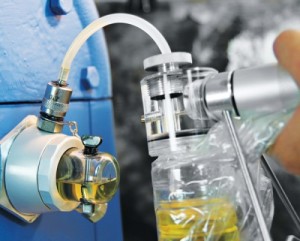
SCHECULE : 23 - 25 April 2018
VENUE : Jogjakarta Plaza Hotel
DURATION : 1- 3 days
OUTLINES
How Lubrication Affects Machine Reliability
- Financial benefits from achieving lubrication excellence
- Five equipment maintenance strategies, and when each applies
- Important implementation steps to lubrication excellence
- 10 roadblocks to achieving lubrication excellence
Lubrication Fundamentals
- Six important functions of lubricating oils
- How oils and greases are formulated and why it is important
- How friction is generated in lubricated machinery
- The importance of oil film thickness and critical clearances
Understanding Additives, Base Oils and Grease Thickeners
- How lubricant properties irreparably change
- Seven important physical properties of a base oil
- The importance of API’s five base oil categories
- When to select one of the six most commonly used synthetic base oils
- How to use temperature to determine the right base oil for your machine
- How to select grease thickeners for your application
Lubricant Performance Properties
- 14 key additives that enhance lubricant performance
- Understanding viscosity grades, measurement, and reporting
- Why Viscosity Index is important and how it improves your work
- Lubricant performance tests and reporting – what you need to know
- How water contamination generates other contaminants
- How to control and eliminate aeration problems
Food-grade and Environmentally-friendly Lubricants
- Important USDA requirements and government regulations for food-grade lubricants
- What you need to know about food-grade additives, base oils and grease thickeners
- Advantages and disadvantages of food-grade lubricants
Lubricating Grease Application Methods
- Seven tips for avoiding incompatible grease mixtures
- Advantages and disadvantages of centralized lubrication systems
- Best practices for greasing motor bearings
- How to calculate greasing intervals and quantity
- Best practices for ultrasonic/sonic-based greasing
- Important tips for working with your motor rebuild shop
Lubricating Oil Application Methods
- Overview of oil lubrication methods and devices
- How to use oil mist and other automatic lubrication methods
- Using pressure spray methods for gearboxes
- Best practices for the maintenance of grease guns and fittings
- Overview of single-point direct lubrication systems
Selecting Lubricants
- Journal and rolling-element bearings
- Open and closed gears
- Gas engine and gas compressors
- Air compressors
- Hydraulic fluids
- Steam and gas turbines
- Process pumps
- Multipurpose grease
- Oil mist lubricants
Lubricant Contamination Control
- Building reliability through contamination control
- Seven most destructive contaminants and how to control them
- Three steps to proactive maintenance
- Understanding the ISO Solid Contaminant Code
- 10 ways to maximize filter cart usage
Oil Drains, Flushing, and Reservoir Management
- How to optimize and extend oil change intervals
- Interval vs. condition-based oil change
- How to monitor lubricant consumption
- Best practices for oil changes
- How and when to perform a flush
- Selecting appropriate cleaning and flushing procedures
Storage, Handling, and Managing Lubricants
- How to set up a world-class lube room
- How to optimize lubricant selection/procurement
- How to implement a lubricant consolidation program and select suppliers
- Best practices for inspecting/testing new lubricants
- Used lubricant storage, handling, and disposal best practices
Design and Inspect for Lube Excellence
- World-class strategies for accessorizing equipment for lubrication excellence
- Seven critical accessories for inspection and sampling
- Seven critical accessories for contamination control prevention
- Eight essential lubrication accessories
- What your breather is telling you about your machine
Used Oil Analysis Fundamentals
- What oil analysis can tell you
- Types and categories of oil analysis
- Applications for oil analysis
- Overview of oil analysis tests
Oil Sampling – The Very Best Practices
- 11 elements of a successful oil analysis program
- How clean should sample bottles be?
- How to find the best sampling locations
- Sampling valves and hardware recommendations
- A quick method for optimizing sampling intervals
- An oil sampling technique that ruins trending
- The importance of primary and secondary sampling points
- How to properly sample circulating systems
- Safe, effective high-pressure sampling from hydraulic systems
- Best practices for sampling splash-, collar-, and ring-lubricated systems
Essential Field Inspections
- 12 questions your filter will answer about your machine
- Which visual inspections can provide big results
- Used filter inspections
- Quick tips for using scent, sound, and touch to inspect lubricants





